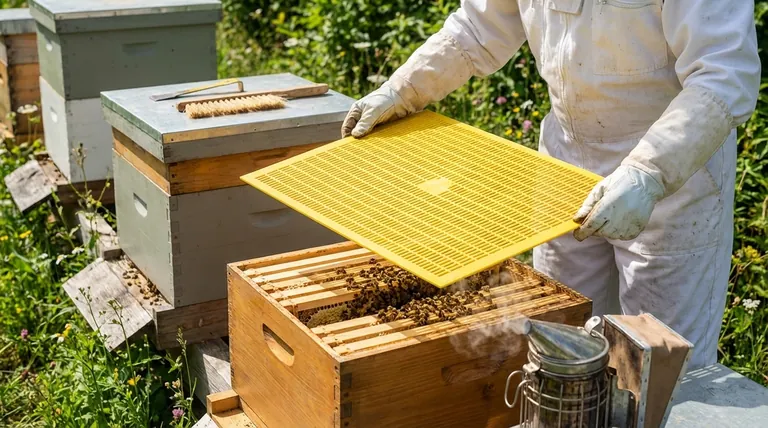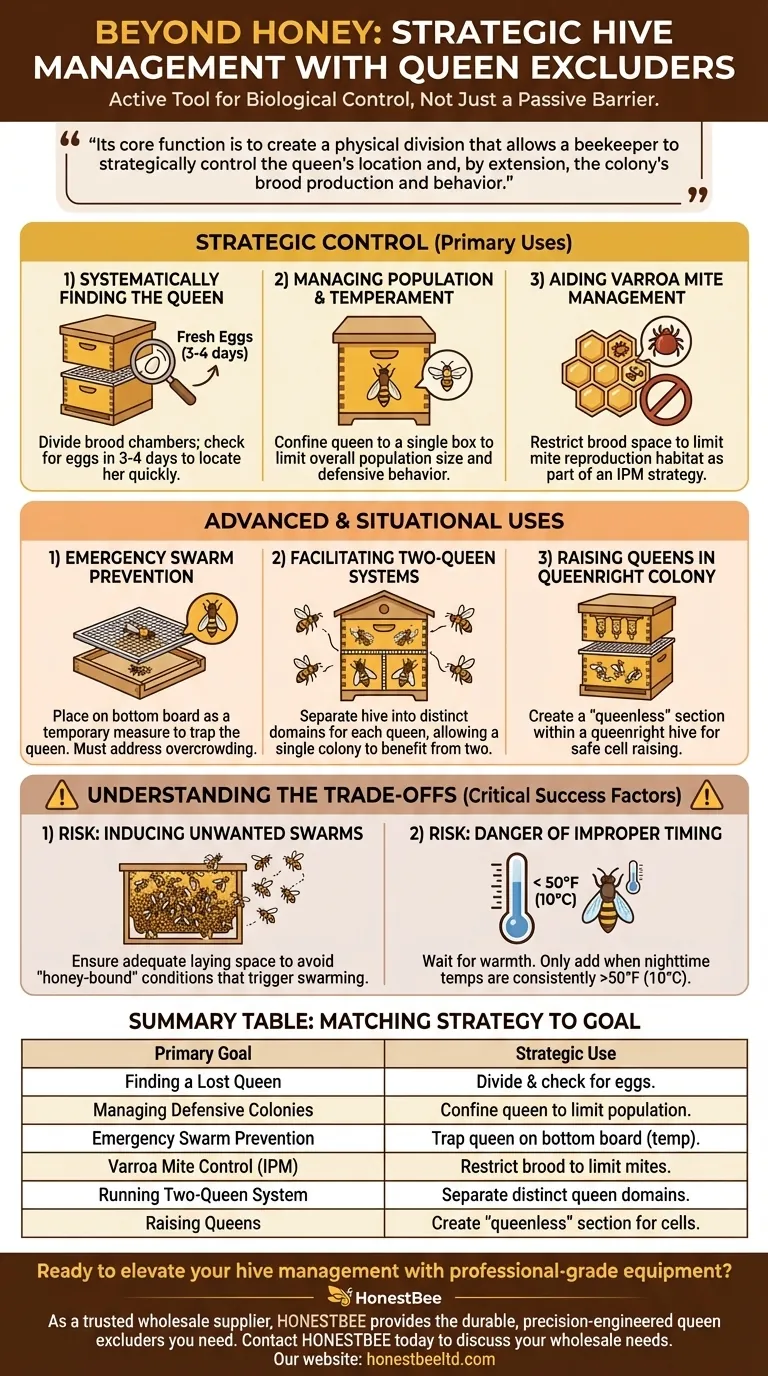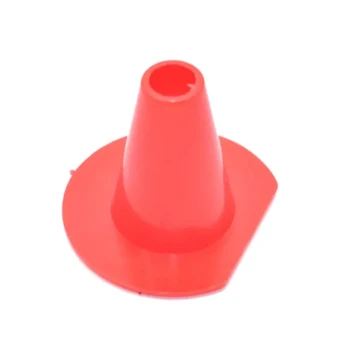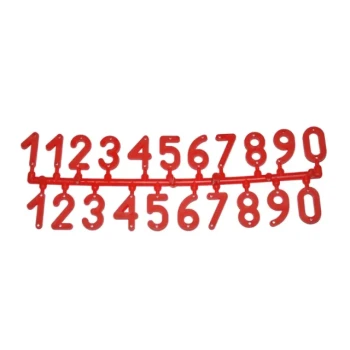While most beekeepers know the queen excluder as the tool that keeps the queen out of honey supers, its strategic value extends far beyond simplifying extraction. An excluder is a powerful instrument for directly manipulating colony biology, allowing you to find the queen, manage population size, and even aid in swarm and pest control. By treating it as more than just a honey-harvesting aid, you can solve several common hive management challenges.
The queen excluder is not simply a passive barrier; it is an active management tool. Its core function is to create a physical division that allows a beekeeper to strategically control the queen's location and, by extension, the colony's brood production and behavior.

Beyond Honey: Strategic Control of the Brood Nest
The most powerful alternative uses of a queen excluder revolve around gaining precise control over the brood nest. This allows you to influence colony dynamics in ways that are impossible without one.
Systematically Finding the Queen
One of the most valuable uses is to locate a queen without having to inspect every frame. This is especially useful in large, multi-story hives.
The process is simple: If you have a two-story brood chamber, place the queen excluder between the two boxes. After three to four days, inspect the frames for fresh eggs. The box containing the eggs is the one with the queen.
This method transforms a potentially hour-long search into a quick, definitive check, minimizing disruption to the colony.
Managing Colony Population and Temperament
By confining the queen to a single brood box, you effectively cap the number of cells she can lay in. This directly limits the colony's potential size.
This technique is particularly useful for managing highly defensive colonies, such as those with Africanized genetics. A smaller population is inherently less defensive and easier to handle during inspections.
Aiding in Varroa Mite Management
Research suggests that limiting the queen's laying space can be a component of an Integrated Pest Management (IPM) strategy for Varroa mites.
Varroa mites reproduce exclusively within sealed brood cells. By restricting the amount of available brood, you are also restricting the mites' ability to multiply, thereby helping to keep their population in check.
Advanced and Situational Uses
For beekeepers facing specific challenges, the excluder offers several advanced solutions, from preventing a swarm to managing multiple queens.
Emergency Swarm Prevention
Placing a queen excluder above the bottom board can trap the queen inside the hive, preventing a swarm from leaving with her.
This is strictly a temporary, emergency measure. It does not solve the underlying cause of the swarm impulse (e.g., overcrowding) and should only be used as a short-term fix while you address the root problem.
Facilitating Two-Queen Systems
In a two-queen system, an excluder is used to separate the hive into distinct domains for each queen. This allows a single colony to benefit from the laying capacity of two queens without them fighting.
The excluder ensures each queen stays in her designated brood chamber while allowing the worker bee population to mingle and function as a single, powerful unit.
Raising Queens in a Queenright Colony
Queen breeders use excluders to create "queenless" sections within a "queenright" hive. This allows them to raise new queen cells in an upper box, benefiting from the heat and resources of the large colony below, without the resident queen destroying the new cells.
Understanding the Trade-offs
Using a queen excluder for these purposes is not without risk. Proper timing and an understanding of the potential downsides are critical for success.
Inducing Unwanted Swarms
While you can use an excluder to limit population, you can also inadvertently trigger a swarm. If the queen is confined to a brood box that becomes overcrowded with bees, honey, and pollen (a condition known as being "honey-bound"), the bees' natural response is to swarm.
You must ensure the queen has adequate laying space within her confined area. This may involve rotating frames of honey or pollen out of the brood box.
The Danger of Improper Timing
Placing an excluder on the hive too early in the spring is a common and serious mistake. If nighttime temperatures drop significantly, the bee cluster may move upwards to stay warm, leaving the queen isolated below the excluder.
A queen trapped below the cluster in cold weather can easily chill and die. As a rule, only add an excluder when nighttime temperatures are consistently above 50°F (10°C).
Making the Right Choice for Your Goal
To apply these techniques effectively, align your strategy with your specific management objective.
- If your primary focus is finding a lost queen: Use the excluder to divide the brood chambers and check for eggs after a few days.
- If your primary focus is managing a defensive colony: Use the excluder to confine the queen to a single box to limit overall population size.
- If your primary focus is emergency swarm prevention: Place the excluder on the bottom board as a temporary measure while you immediately work to relieve hive congestion.
- If your primary focus is mite control: Integrate brood restriction as part of a larger IPM plan, understanding it reduces mite habitat.
By mastering these applications, the queen excluder becomes one of the most versatile and valuable tools in your apiary.
Summary Table:
| Primary Goal | Strategic Use of Queen Excluder |
|---|---|
| Finding a Lost Queen | Divide brood chambers; check for eggs in 3-4 days to locate her quickly. |
| Managing Defensive Colonies | Confine queen to a single box to limit population size and temperament. |
| Emergency Swarm Prevention | Place on bottom board as a temporary measure to trap the queen. |
| Varroa Mite Control (IPM) | Restrict brood space to limit mite reproduction habitat. |
| Running a Two-Queen System | Separate hive into distinct domains for each queen. |
| Raising Queens | Create a "queenless" section within a queenright hive for cell raising. |
Ready to elevate your hive management with professional-grade equipment?
As a trusted wholesale supplier to commercial apiaries and beekeeping equipment distributors, HONESTBEE provides the durable, precision-engineered queen excluders and other essential tools you need to implement these advanced techniques confidently. Our wholesale-focused operations ensure you get reliable equipment that supports productive, healthy colonies.
Contact HONESTBEE today to discuss your wholesale needs and discover how our supplies can strengthen your apiary's success.
Visual Guide

Related Products
- Professional Plastic Queen Excluder for Modern Beekeeping
- High Performance Plastic Queen Excluder for Beekeeping and Apiary Management
- Premium Wood Framed Metal Wire Queen Bee Excluder
- Plastic Queen Bee Excluder for Bee Hive Wholesale
- Metal Queen Bee Excluder for Beekeeping
People Also Ask
- How does a queen excluder work? Master Hive Management for Pure Honey Harvests
- What are the pros of using queen excluders? Boost Honey Production & Hive Efficiency
- What is the purpose of a queen excluder when adding a super? Streamline Your Honey Harvest
- Why are queen excluders recommended for Flow Hives? Prevent Brood Damage for a Clean Harvest
- What is the primary function of a queen excluder in beekeeping? Control Hive Layout for Efficient Honey Harvesting



















